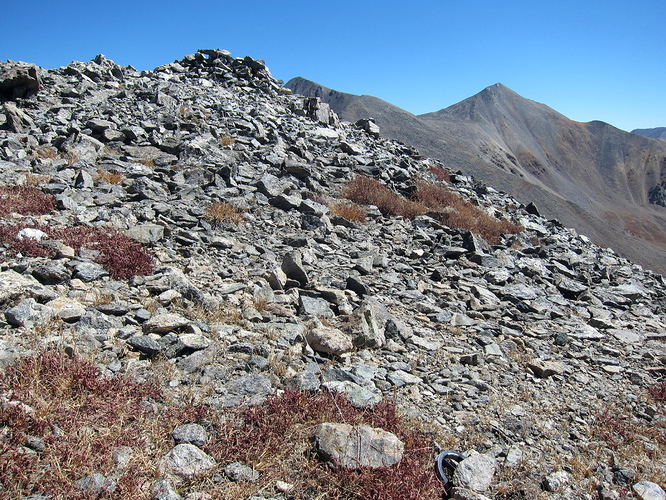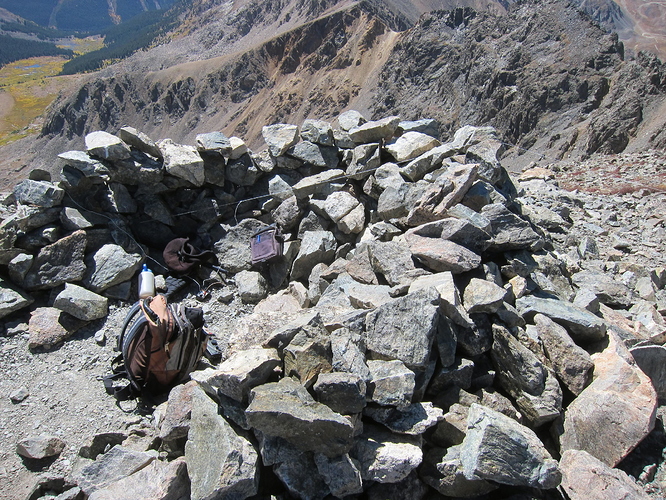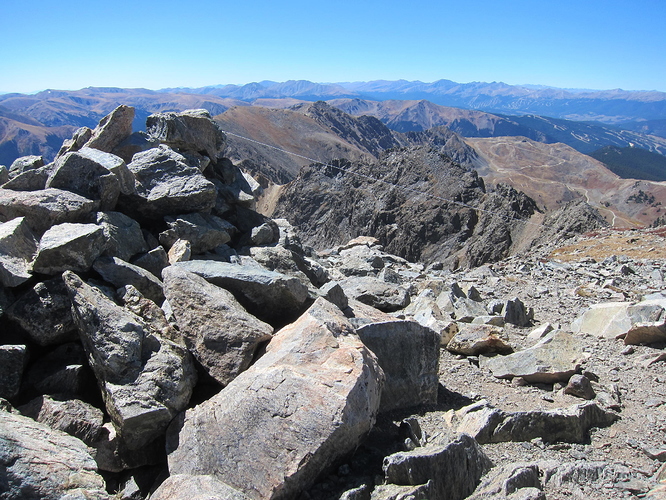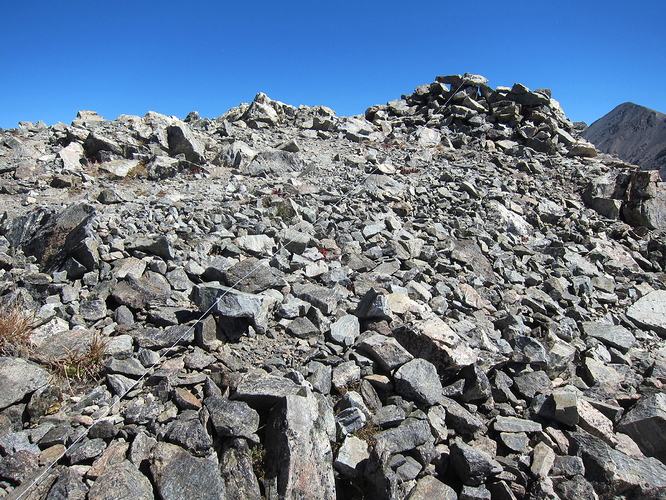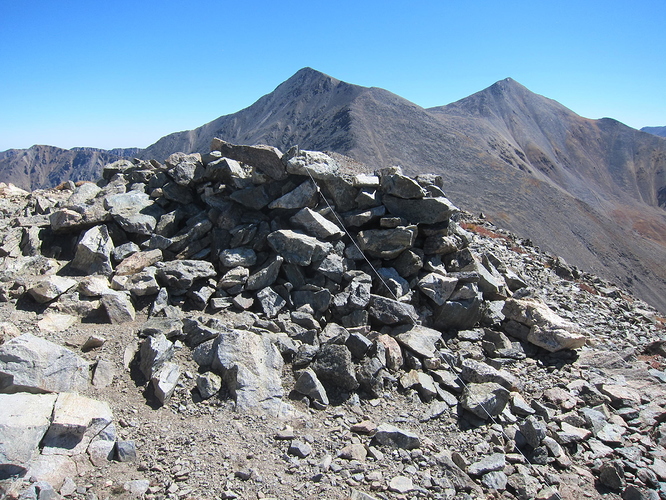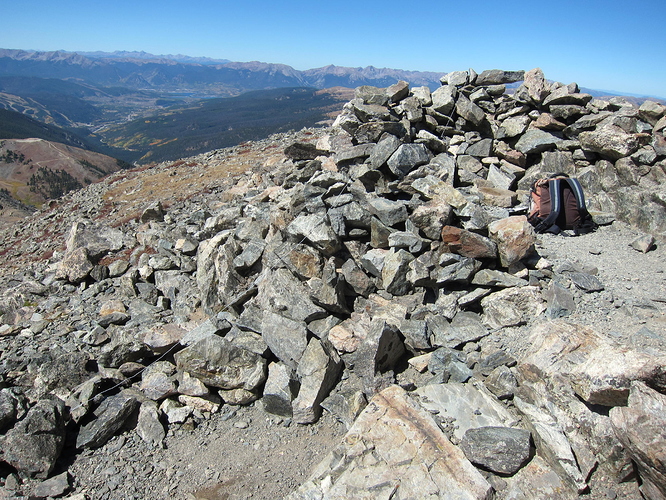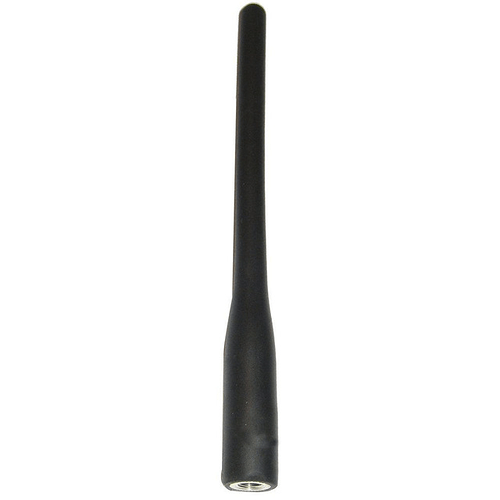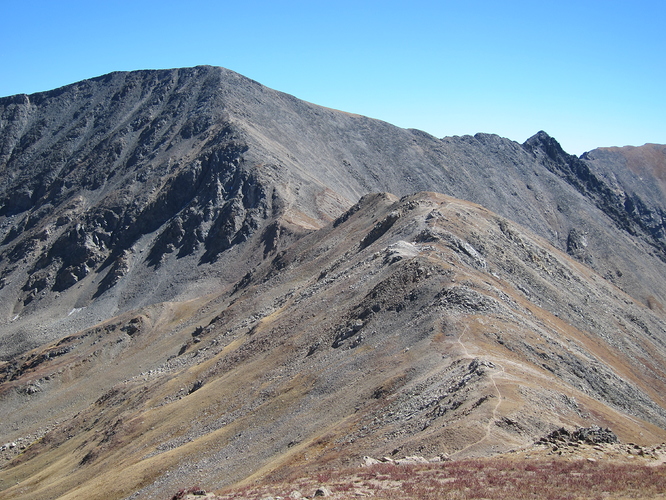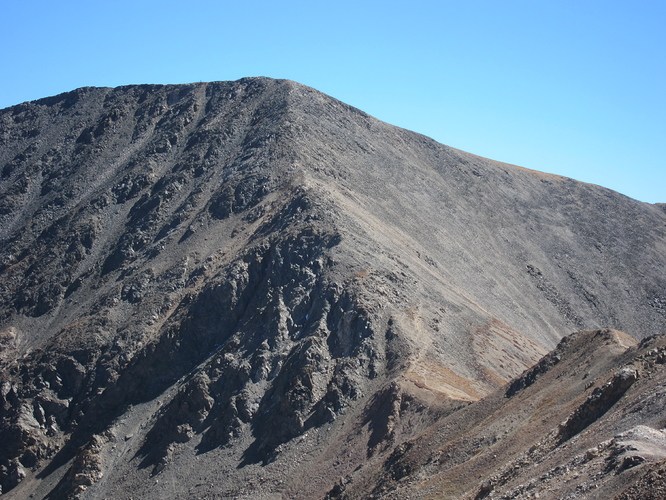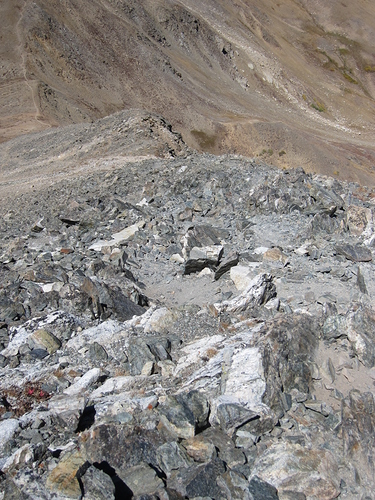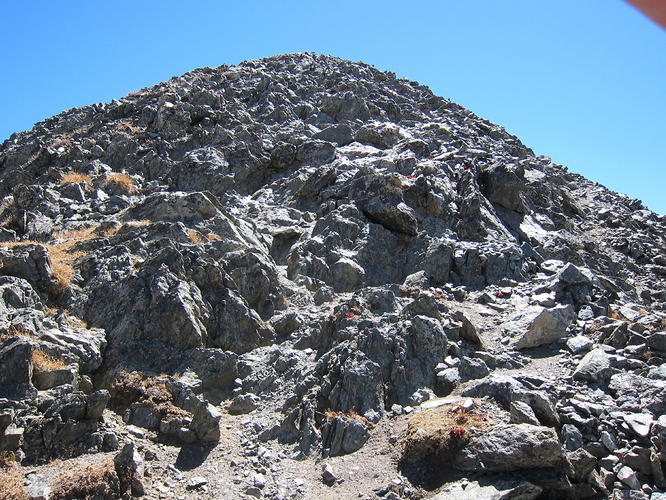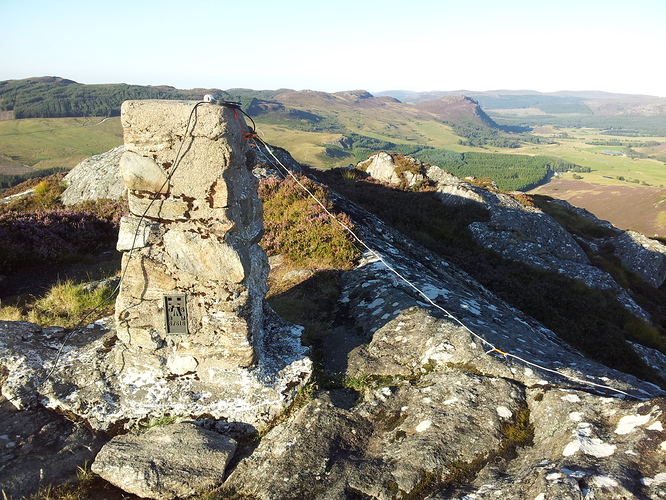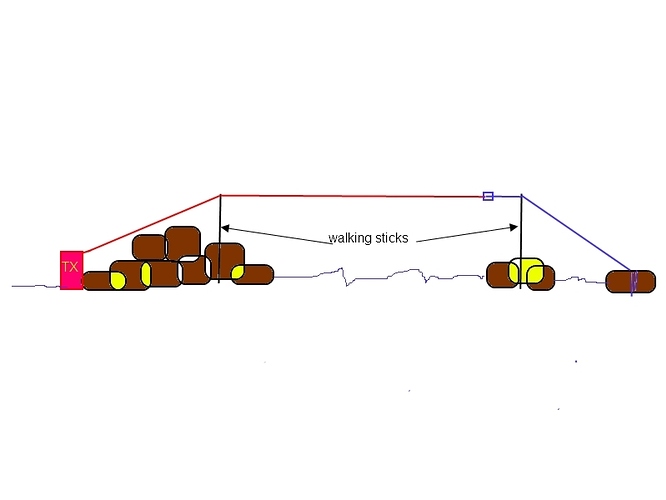On Sep 13, 2018, I activated an alpine peak on the Continental Divide, W0C/PR-022 Grizzly Peak, 4093M, 13,427’. This summit was so windy that I had some difficulty ascending the steep, rocky northwest ridge. I was being pushed around by the wind. At times I was on all fours. While it was a dry day, with a temperature near 10 degrees C, the wind was violent and gusty. I carried a telescoping fishing pole, but I decided not to use it - the wind gusts might have broken it. At a minimum I would have had to guy it, something I regularly do when required, but it was extremely unpleasant to try to do anything on that exposed summit! The only practical spot for my activation was a small wind shelter built out of rocks, right on the peak. This shelter is about 4 feet high, and barely large enough for 2 or 3 people – it’s just a semi-circular pile of rocks. I decided to see if I could make some SOTA contacts without using my pole.
I had a 52-foot #24 teflon wire and a 12-foot counterpoise wire. I worked with the wind to lay the 52-foot wire on the rocks, upwind of the shelter. This was difficult - the wind was trying to take the wire away from me – I had to be very careful! First I got the far end at the right place, into the wind, and I tied it down to a good rock, using a long string on the end of the wire.
Next I ran the “feed end” up over the rock shelter and down into the cavity, where I could set up and not lose my gear. I had to improvise to put some tension on that wire, so part of it would be above the ground. The highest point of the wire was about 4 feet above the peak. At least half of the 52-foot wire was on the rocks, and much less than half was elevated by more than a foot. Next I laid the 12-foot counterpoise wire out across the summit rocks in the other direction, put several rocks on it, and got into the shelter. I wondered if I could make even four contacts – I had never used such a ridiculous-looking antenna! It seemed like a silly stunt, up in the thin, roaring air!
It was amazing how well the simple rock shelter stopped the worst of the wind! I plugged the two wires into my homebrew tuner, put on my small headphones, and added a fleece hat to reduce the wind noise. Then I listened with my KX2. On 20M there were CW stations and normal-sounding band noise! My tuner settings were only a little different from normal. I got a good match immediately! With the 52 foot wire and the 12 foot counterpoise, and the wire at normal height on a pole, the impedance at 14 MHz is low. A tuner designed to match a low Z is required - my tuner did a good job. The “elevated part” of the wire – the part not actually lying on the rocks – was the low Z part, where the RF current was highest. This antenna was an off-center-fed full-wave doublet on 20M.
I started calling CQ on 20M CW, the RBN spotted me quickly, and I was off to the races! My first contact was Bob W0BV, over in Buena Vista, about 57 miles, 92 KM, not skip, across other mountains to the southwest. N4EX in NC was my fourth contact, and when I got him, I realized that I was enjoying an almost normal activation. I had 4 contacts in just minutes! K0RS was #5 – he’s about 64 miles, 103 km, away near Guffey, in South Park, and not skip! Before I knew it, I had logged 18 contacts on 20M – they were from all over the USA. The last one on 20M was N7EDK in FL. My signal reports were OK, and I was giving out many good reports as well. The whole thing seemed miraculous…I wondered what 30M would be like.
30M went just like 20, except that the match was less ideal – but my tuner took care of it. The 52’ main wire is close to a half wave at 10.1 MHz, so the feed is high-Z. Despite lying across rocks for much of its length, the “system” worked pretty well! In a short time I had 18 more contacts in the log on 30M. They were my regular chasers all around the USA. Surely this was some kind of big joke!
After doing 30M CW, I decided to tune around – I found N9XG on 20M on W1/DI-001 – worked him S2S! He was on Cadillac Mountain, on Mount Desert Island, in Acadia National Park, Maine! That peak is 3125 KM away from Grizzly Peak - about 1938 miles.
Next I went to 40M and tuned up. The match was moderately low-Z, to be expected, since the total wire length was about a half wave, and the feed was off center. The LED bridge indicated a perfect null. I called CQ and got spotted by the RBN – before long I worked K5DEZ in NM and WB7ULD in UT. That was it – no more calls - but I had worked many of my regular chasers already on 20 and 30M. I suspect that performance on 40 was down from normal, but the band noise didn’t seem a whole lot lower than usual.
I tuned around for a long time, and on 30 CW I found K7PX, Steve, on W0C/SR-003 – far to the west on Mount Antero – for 10 points – and I worked him S2S ! That’s about 70 miles, 113 km, a long way - but Steve was at 4349M, and I was at 4093M, so no problem! A short time later I found WG0AT on 20M, also on Mount Antero with K7PX, and I got him S2S too. Both contacts were 599-599! That was a nice finish.
In all there were 38 contacts on the three bands, including 3 S2S! Most of those were in the first 40 minutes. Not long before, I had doubted whether I could do the activation successfully - it was quite a surprise.
Later, I looked at my saved RBN spots, and while some may have been a few db below normal, I still had plenty of good spots. The solar flux was 70, and the K index was 3: near-solar-minimum band conditions.
What probably made this low antenna work so well is that the summit was mostly dry crystalline rock, which is similar to ceramic dielectric material. The “ground” wasn’t really ground at all. Clearly the antenna functioned in an acceptable manner, partly because my tuner can correct for changes in impedance caused by the proximity of a rocky surface. That summit is also rather small and prominent, really the high point of a long, narrow alpine ridge, so the antenna was positioned well to radiate, despite being close to the rocks. The photos tell the rest of the story.
Often we see SOTA spots that say “just need two more”, or something like that. With my experience in mind, please consider how incredibly easy it was to get 38 contacts using a quasi-resonant wire, mostly lying on the rocks. If I had taken a magnetic loop up there, it probably would have flown to Kansas, or dragged me over the precipice on the east side of the Divide. All you need is a wire or two, and a good tuner!
This story may prove useful, should you find yourself in difficult conditions, perhaps with a broken pole, or no pole at all. At 4000M, in high winds, you may not have many options! Just knowing that an activation like this is possible may lessen the stress that comes with climbing a really windy summit.
I’m sure some of you have done unusual SOTA activations, under difficult conditions, using seemingly absurd antennas. Perhaps other major problems have occurred, but you have prevailed. Please share some of your experiences here! I know I’m not the first to make contacts with an antenna on the “ground”, or on snow.
73
George
KX0R
